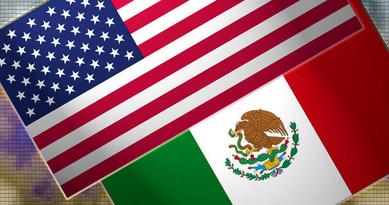Editor’s Note: This article was written by the late Bill Tucker in 2016, and follows the problem up until that time.
By: William H. Tucker*
Bi-Lateral Relations Have Always Been Based on Labor Needs
The need for U.S. employers to import Mexican manual labor was first caused by the expansion of cattle ranches in the Southwest and by the increase of fruit production in California between 1850 and 1880. Between 1850 and 1880, 55,000 Mexican workers immigrated to the United States to become field hands in regions that had, until very recently, belonged to Mexico.

Immigration During the 1800’s – Railroad & Skilled Laborers
The presence of Mexican workers in the American labor market started with the construction of the railroad between Mexico and the U.S. That presence grew between 1880 and 1890. As much as 60 percent of the railway working crews were Mexican.
Rodolfo Tuiran, in his paper “Past and Present of the Mexican Immigration to the United States”, reports that the initial flood of migrant workers to the United States were mainly skilled miners, work hands from cattle ranches in Mexico, indentured servants fleeing Mexican farms, small independent producers who were forced north by natural disasters or Indian raids and workers affected by the secession. Immigration intensified with the Mexican Revolution of 1910. It is estimated that between 1910 and 1917, 53,000 workers per year migrated to the U.S.
Immigration During World War I – Agriculture, Industry & Service Workers
Another factor that contributed to the migration of Mexican workers to the U.S. was World War I. During the war, Mexican workers performed jobs not only in the agricultural field but also in the industry and service area. In those years it was easy for Mexican workers to enter the United States because they were needed. After World War I ended, the need for Mexican workers diminished except in the agricultural industry.
An Exodus During the Great Depression
The years of the Great Depression saw an exodus of many persons of Mexican heritage including some who were U.S. citizens. A report in USA Today, published in 2006, stated: “Tens of thousands, and possibly more than 400,000, Mexicans and Mexican-Americans were pressured through raids and job denials to leave the USA during the Depression. Every President since Hoover has had to meet the problem of illegal Mexican immigration.
Mexicans Get Imported Again During World War II
Whenever the United States found a reason to close the door on Mexican immigration, some event would force them to reopen that door. Such was the case when the United States entered World War II.
In 1942, the United States was heading to war with the fascist powers of Europe. Labor was siphoned from all areas of United States industry and poured into those which supported the war efforts. Between the period of 1942 and 1964, millions of Mexicans were imported into the U.S. under the Bracero Program to work temporarily on contract to United States growers.
Then Deported After World War II
After the war, however, during the Truman years, more than 127,000 were formally deported and more than 3.2 million left voluntarily rather than face deportation — a total of nearly 3.4 million.
In 1954, President Eisenhower implemented “Operation Wet Back” which saw another 1.3 million Mexicans deported or voluntarily repatriated in just a few months. Presidents Kennedy, Nixon, Reagan, Carter, Clinton, Bush, Obama, and Trump have all had programs to address the problem of illegal immigration. Still, none of them have been successful in resolving the problem.
Today?
Today it is estimated that there are over ten million undocumented Mexican immigrants in the United States and 13.9 million Mexican families affected by its immigration policy. Mass deportation is not the answer to the problem.
Before making decisions about the future, it is wise to know the true history of the past.
* About the Author: William H. Tucker (deceased in 2016) was a co-founder of this publication. He attended the University of Michigan Graduate School of Law where he concentrated on Constitutional law. Born in Detroit, Michigan, he resided in Mexico for almost 20 years where he taught and consulted with local businesses. RIP.
Related Article:
The Mexican Immigration Problem in the USA: How It Started. Part 1:
https://imagine-mexico.com/the-mexican-immigration-problem-in-the-u-s-a-how-it-started-part-1











